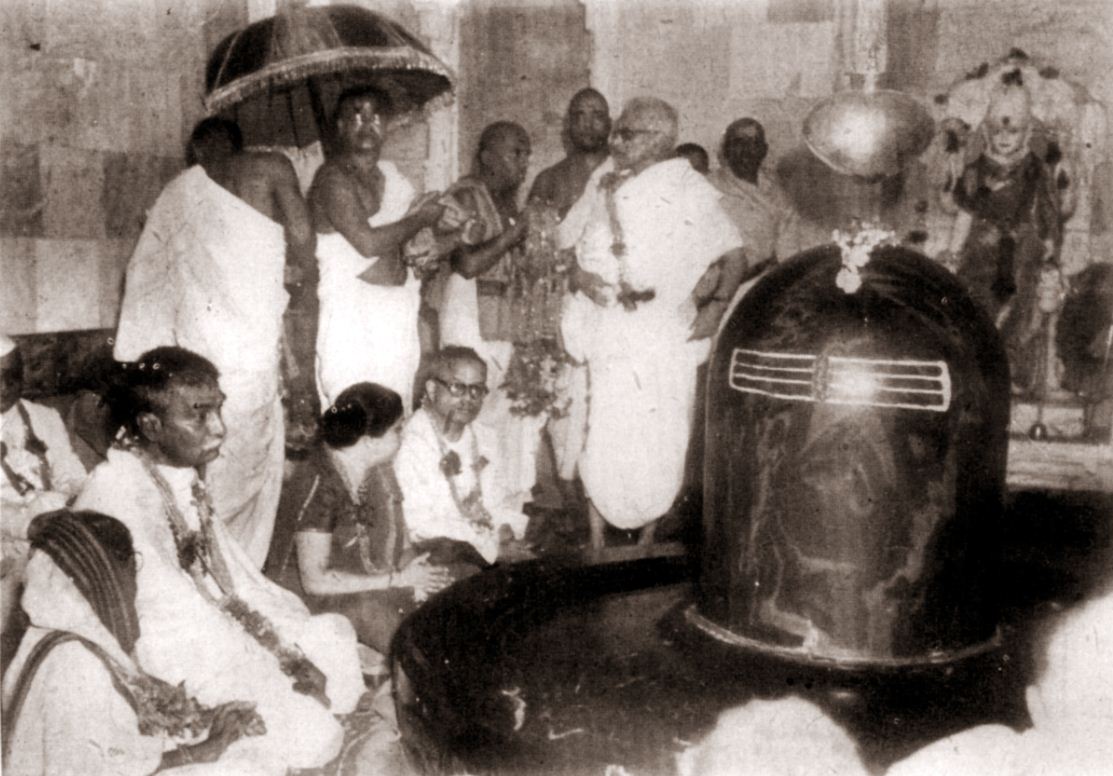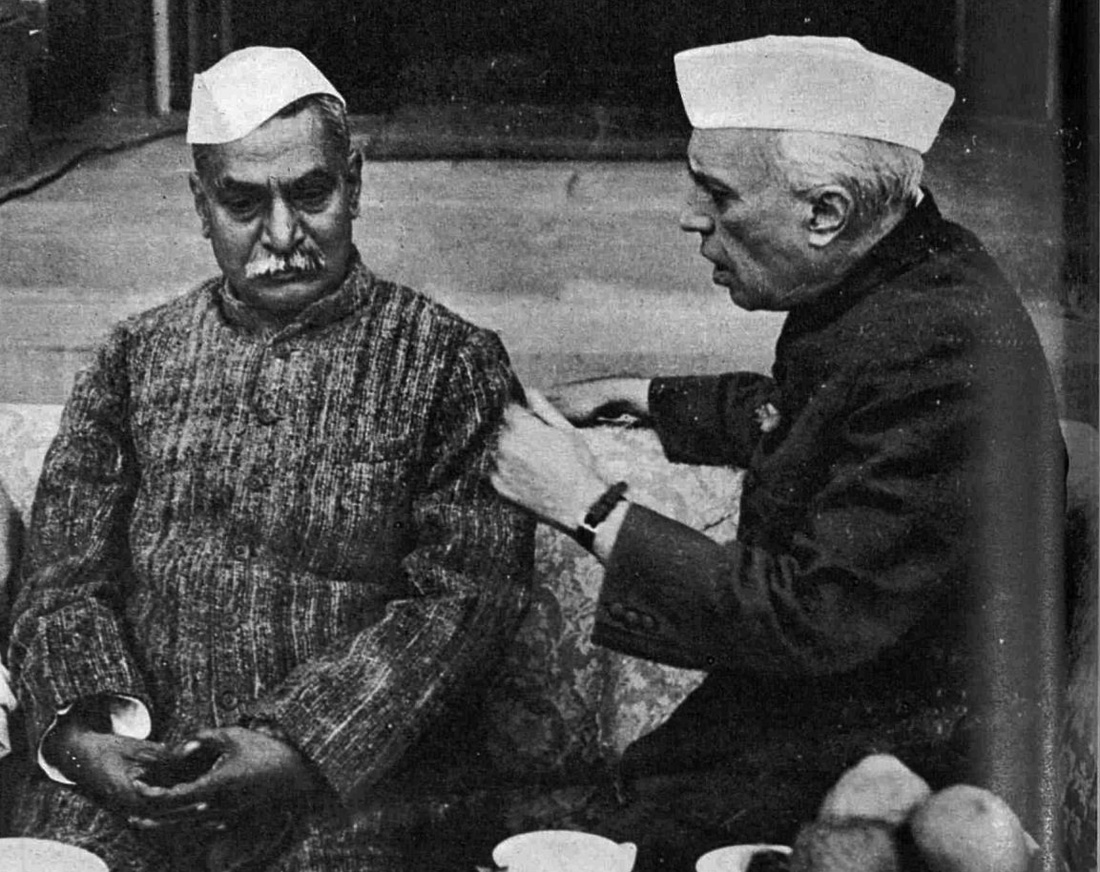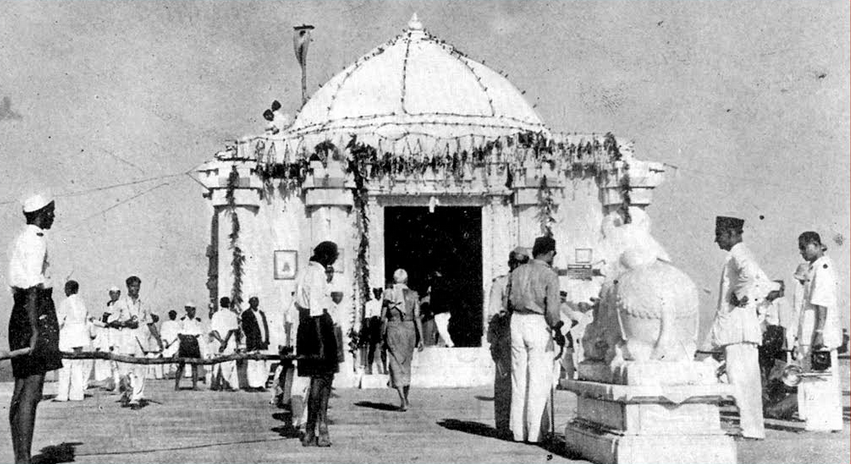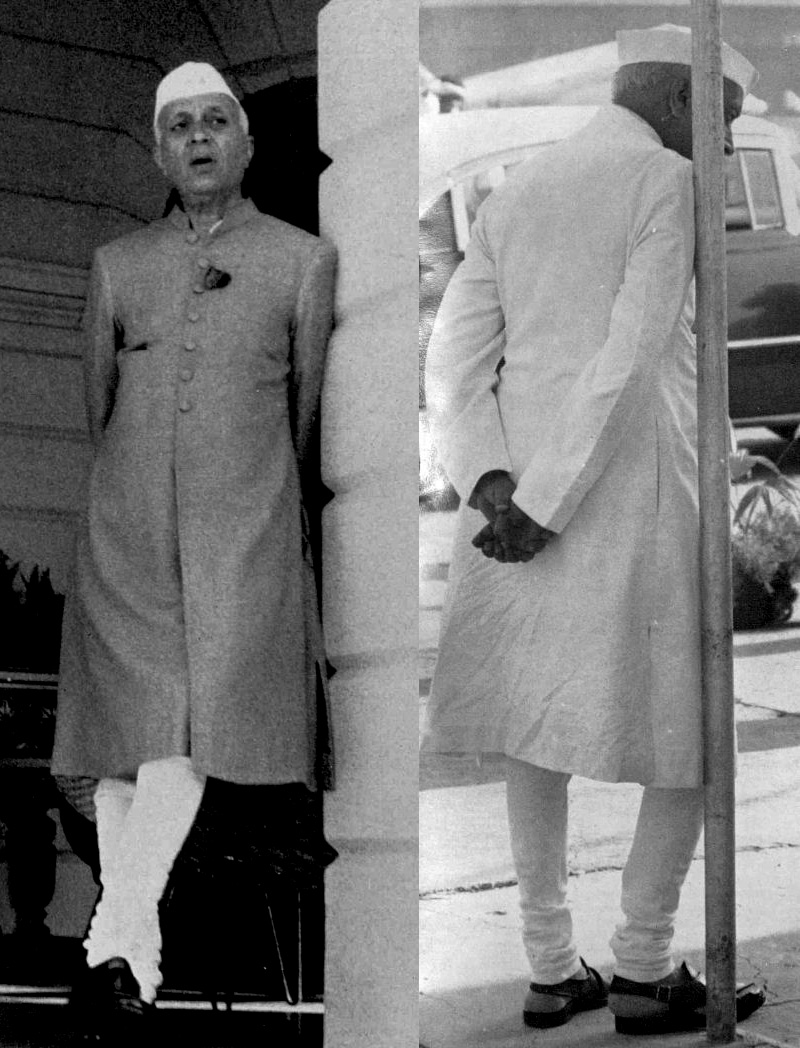Somnath Series: How Jawaharlal Nehru opposed President Rajendra Prasad’s decision to attend Somnath ceremony
May 11, 2019
By Japan K Pathak
Presented here are the historical details that throw light on how India’s first Prime Minister Jawaharlal Nehru had opposed President Rajendra Prasad’s decision to attend the installation ceremony of Somnath shiv linga, scheduled to take place on May 11, 1951.
Rajendra Prasad was not Nehru’s first choice for the post of President: Mathai in his book
Mathai in his book Reminiscences of the Nehru Age writes: Nehru did not like the idea of Rajendra Prasad as President because he was very conservative, traditionalist and somewhat obscurantist. He tried to dissuade Rajendra Prasad by offering him the offices of a Cabinet Minister and chairmanship of the Planning Commission. Rajendra Prasad was not interested in the offer. Nehru soon discovered that the bulk of Congress MPs were opposed to Rajaji. Sardar Patel appeared neutral though his preference was known. It was not for Rajaji. If Nehru had stoof firm, Rajaji would have been elected; but Nehru disliked taking any important issue to the breaking point. So, ultimately he beat a retreat, leaving Rajaji with aggrieved feeling of having been let down. Thus Rajendra Prasad became the first President of the Republic on 26 January 1950.
(Rajendra Prasad and Radhakrishnan, Reminiscences of the Nehru Age by Mathai, page 70-71)
***
Differences between Nehru and Rajendra Babu
Rajendra Prasad’s biographer RL Handa in book (Rajendra Prasad – Twelve years of triumph and despair) notes:
In spite of the undoubted flexibility and understanding on both sides, differences had begun to surface on constitutional issues between the President and the Prime Minister within two months of the former taking over. These related to the powers of the President and have been dealt with elsewhere in this book. More serious, however appeared to be the differences which cropped up in May 1951 over the President’s decision to open the newly constructed Somnath Temple in Saurashtra. The Prime Minister objected to the President’s associating himself with the function on the plea that such an act would not be in keeping with India’s poicy of secularism. Disagreeing with Nehru’s interpretation of secularism and his understanding of the status and place of the Somnath Temple in Indian history, Rajendra Prasad stuck to his decision to go there and open it formally.
***
In the words of K.M. Munshi, this is what happened regarding Somnath invitation to Rajendra Babu:
“when the time came to install the deity in the(newly constructed Somnath) temple, as Sardar had passed away, I approached (President) Rajendra Prasad and asked him to perform the ceremony, but added a rider to my invitation that he should accept it only if he was prepared not to fail us.
My correspondence with the Prime Minister was no secret to Rajendra Prasad. He promised that he would come and install the deity, whatever the attitude of the Prime Minister, and added: “I would do the same with a mosque or a church if I were invited.” This, he held, was the core of Indian secularism. Our State is neither religious nor anti-religious. My foreboding proved correct. When it was announced that Rajendra Prasad was attending the inauguration of the Somnath Temple, Jawaharlal vehemently protested against his going to Somnath. But Rajendra Prasad kept his promise.”
(from Pilgrimage to Freedom, volume 1, page 288).
***

Nehru’s first letter to Rajendra Babu regarding Somnath ceremony
Nehru’s letter to Rajendra Prasad
New Delhi
2 March 1951
Last paragraph…
I confess that I do not like the idea of your associating yourself with a spectacular opening of the Somnath temple. This is not merely visiting a temple, which can certainly be done by you or anyone else, but rather participating in a significant function which unfortunately has a number of implications. Personally, I though that this was no time to lay stress on large-scale building operations at Somnath. This could have been done gradually and perhaps more effectively later. However, this has been done. I feel that it would be better if you did not preside over this function.
Yours sincerely,
Jawaharlal Nehru
Footnote: Rajendra Prasad wrote that he had been approached by the Jam Sahib of Navanagar to preside over a function in connection with the Somnath temple, built from public subscriptions. “I personally do not see any objection to associating myself with the function, particularly because I have never ceased visiting temples, and…denominational religious or semi-religious institutions….”
(2nd series 16 part -1 page 269-270)
***
Rajendra Prasad’s reply to Nehru
New Delhi
March 10, 1951
Rajendra Prasad wrote to Nehru on 10 March 1951 that the Somnath temple had been built entirely with private subscriptions and he was not doing anything extraordinary if he associated himself with the function, as he visited other places of worship whenever he felt inclined to do so. Moreover, he did not feel it right to refuse the invitation because the Somnath temple had much historic significance and the invitation came from the Rajpramukh (Jam Saheb) of the State (Saurashtra), who was also the Chairman of the Board of Trustees (of Shri Somnath Trust).
(From a footnote in 2nd series 16 part – 1 page 603-604)
***
Nehru’s letter to Rajendra Prasad: Will not press further
New Delhi
March 13, 1951
My dear Rajendra Babu,
I am sorry for the delay in answering your letter of the 10th March regarding your visit to Somnath temple. I have already conveyed my reactions to this. But if you feel that it will not be right for you to refuse the invitation, I would not like to press my point any further.
Yours sincerely,
Jawaharlal Nehru
(2nd series 16 part – 1 page 603-604)
***
Nehru’s note to Secretary-General and Foreign Secretary, MEA: Rajendra Babu had to go as he had promised
17 April 1951.
In second para: ….. I mentioned to the President sometime ago that I did not fancy his visiting the Somnath temple on this occasion. He said he had promised to do so and it was difficult for him to get out of his promise. There is nothing more to be done about it. But I have made it clear both to the President and to Mr. Munshi that I do not at all like these activities. …
(2nd series 16 part 1 page 605)
***

Nehru’s letter to K.M. Panikkar: Was difficult for me to come in Rajendra Babu’s way at late stage
New Delhi
17 April 1951
My dear Panikkar,
…. I entirely y agree with what you have written about the Somnath temple business. The whole thing is fantastic. I have in fact said so to the President and to Mr Munshi who is the chief patron and organiser. Indeed I asked the President not to associate himself with this. But he had already agreed and it was difficult for me to come in his way at this late stage. I have tried therefore to tone down the effects of his visit and what he is going to do there…
Yours sincerely,
Jawaharlal Nehru.
(2nd series 16 part 1 page 604)
***
Nehru’s one more letter to Rajendra Babu: I am greatly worried about the Somnath affair
New Delhi
April 22, 1951
My dear Rajendra Babu,
I am greatly worried about the Somnath affair. As I feared, it is assuming a certain political importance. Indeed references have been made to it internationally also. In criticism of our policy in regard to it, we are asked how a secular Government such as ours can associate itself with such a ceremony which is, in addition, revivalist in character. Questions are being put to me in Parliament and I am replying to them saying that Government has nothing to do with it and those persons who are connected in any way are functioning entirely in their personal capacity.
The Jam Saheb who is, I believe, the Chairman of the Somnath trustees, did a very rash thing in sending some kind of a circular letter to our various Embassies abroad and asked them to collect waters and soil from different countries for the Somnath installation. The Jam Saheb happens also to be the Rajpramukh and it is a little difficult to distinguish between these different capacities. Some of our Embassies have been put in a difficult position and have protested strongly to us. Some foreign Embassies have also wondered what all this was about.
According to newspaper reports, the Saurashtra Government has set aside Rs 5 lakhs for these Somnath installation ceremonies. This seems to me completely improper for any Government to do and I have written to that Government accordingly. At any time this would have been undesirable, but at the present juncture, when starvation stalks the land and every kind of national economy and austerity are preached by us, this expenditure by a Government appears to me to be almost shocking. We have stopped expenditure on education, on health and many beneficent services because we say that we cannot afford it. And yet, a State Government can spend a large sum of money on just the installation ceremony of a temple.
I don not know what to do about all this, but I must at least keep the Government of India clear of it. In answer to questions in Parliament, or perhaps in press conferences, I shall have to make this position clear.
Yours sincerely,
Jawaharlal Nehru.
(2nd series 16 part 1)
***
Nehru’s letter to Jam Saheb: My real difficulty is that the President is going to the ceremony
New Delhi
April 22, 1951
Third para:
My real difficulty is that the President is going to the ceremony. I have pointed out to him that this might be misunderstood. But I don not wish to come in the way of his personal inclination in the matter.
Jawaharlal Nehru
(2nd series 16 part 1 page 609)
***

Nehru’s note to S.Dut, Secretary, MEA: Much distressed at association of Govt. with Somnath ceremony
9 May 1951, JN Collection
I have been much distressed at the association of the Government of India with the ceremony that is taking place at Somnath. I wrote to the Jam Saheb and to the Government of Saurashtra about it. I find now that in fact some Ministries of the Government of India, including our Ministry, had been consulted and in fact they encouraged various steps that were taken. I am afraid we can do nothing further in the matter now. But I think all this association is most unfortunate.
***
Nehru’s letter to Jam Saheb: Nehru refuses to attend Somnath ceremony, suggests Jam Saheb to stay away from the ceremony as well
New Delhi
April 24, 1951
My dear Jam Saheb,
Thank you for your letter of the 22nd April conveying an invitation to the ceremonies at the Somnath temple. I am afraid it is not possible for me to leave Delhi at this critical juncture for any such function.
But apart from this, I must be quite frank with you about this ceremony. Indeed I have written to you about it in another connection already. I am troubled by this revivalism and by the fact that our President and some Ministers and you as Rajpramukh are associated with it. I think that this is not in line with the nature of our State and it will have bad consequences both nationally and internationally. As individuals, of course, it is open to anyone to do what he chooses in such matters. But many of us happen to be more than private individuals and we cannot dissociate ourselves from our public capacities.
Yours sincerely,
Jawaharlal Nehru.
(2nd series 16 part – 1 page 610)
***

Nehru to Mridula Sarabhai: See Rajendra Babu and tell him briefly how you feel about his plan to attend Somnath ceremony
New Delhi
April 24, 1951
My dear Mridula,
Your letter. This business of the Somnath temple has given me much trouble and as a matter of fact, sometime ago I spoke to Rajendra Babu about it and wrote to him also. After some correspondence, I said that having put my views before him clearly, I did not wish to come in the way of his personal inclination.
About Saurashtra giving 5 lakhs, I rather think that the news is not quite correct. I am not sure and I am inquiring. In any event, this had nothing to do with Rajendra Babu.
It is far too late to change the President’s plans now, even if he wanted to do so. I do not think it is worthwhile your writing to him. you may, if you like, see him and tell him briefly how you feel about it and about the criticism of the Gujarati Press to which you refer.
Yours,
Jawaharlal.
(2nd series 16 part – 1 page 610-611)
***
Nehru’s letter to Chief Ministers: Somnath ceremony created very bad impression abroad
The recent inauguration of the Smonath temple, with pomp and ceremony, has created a very bad impression abroad about India and her professions. Pakistan, of course, has taken full advantage of this and made it one of the principal planks of its propaganda.
(Footnote: For example, on 12 May 1951, a resolution was passed at a public meeting in Karachi denouncing the renovations at the Somnath temple as an insult to Muslims and an act of aggression against Pakistan “as Junagadh is part of Pakistan’s territory.”
(2nd series 16 part – 1 page 693)
***
Nehru’s letter to Chief Ministers: We must not do anything which comes in the way of our State being secular
You must have read about the coming ceremonies at Somnath temple. Many people have been attracted to this and some of my colleagues are even associated with it in their individual capacities. But it should be clearly understood that this function is not governmental and the Government of India as such has nothing to do with it. While it is easy to understand a certain measure of public support to this venture, we have to remember that we must not do anything which comes in the way of our State being secular. That is the basis of our Constitution and Governments, therefore, should refrain from associating themselves with anything which tends to affect the secular character of our State. There are, unfortunately, many communal tendencies at work in India today and we have to be on our guard against them. It is important that Governments should keep the secular and non-communal ideal always before them.
(2nd series 16 part 1, page 559)
***
Nehru wanted to replace Rajendra Prasad with Radhakrishnan in 1957
Early in 1957 Nehru impulsively offered the presidency to the then Vice-president Radhakrishnan. Nehru thought that after seven years in office and at his advanced age, Rajendra Prasad would wish to retire.Rajendra Prasad, however, had other ideas. He wa a candidate for re-election for anothet term of five years. Nehru soon discovered that Pandit Govind Ballabh Pant and most of the provincial Congress leaders, including Kamraj Nadar, were in favour of Rajendra Prasad’s re-election. Again, Nehru, the true democrat, retreated as he was loath to push anything to breaking point.
(Reminiscences of the Nehru Age, a book by Mathai, page 72)
Also read:
Somnath Series: When President Rajendra Prasad presided the installation ceremony of Somnath Shivalinga
Nehru had asked I&B minister to tone down the description of Somnath Pran Pratishtha ceremony in radio broadcast
DeshGujarat
Related Stories
PM Modi to lay foundation stone for construction of Parvati Mandir in Prabhas Patan
In pictures: PM Modi to dedicate Somnath Exhibition Gallery
Nehru had asked I&B minister to tone down the description of Somnath Pran Pratishtha ceremony in radio broadcast
Somnath Series: When President Rajendra Prasad presided the installation ceremony of Somnath Shivalinga
Somnath Series: How a decision to replace ruined old Somnath temple with a new grand one arrived at
Somnath Series: Mahatma Gandhi's centrist stand on Somnath temple restoration
Somnath Series: Historic visit by Sardar Patel, Gadgil, Jam Saheb that paved the way for reconstruction of ruined Somnath temple
#SomnathSeries : Ruined and ravaged Somnath temple as described by visitors in 19th and 20th centuries
#SomnathSeries : The last destruction of Somnath temple and Gujarat under Aurangzeb
Recent Stories
- ACB Gujarat files offence against SK Langa and son for disproportionate asset
- Kshatriya agitators announce part-2 programs in Gujarat
- FM Sitharaman on Gujarat visit on April 20th
- JNK India Limited’s IPO to open on April 23rd
- CR Patil files nomination papers from Navsari Lok Sabha seat
- Miscreants attempt to vandalize BJP office in Rajkot
- Amit Shah files nomination papers for Gandhinagar Lok Sabha seat
